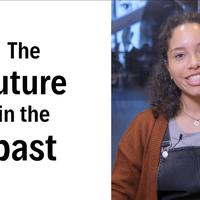How to use the future in the past - English In A Minute - YouTube
Wie man die Zukunft in der Vergangenheit nutzt – Englisch in einer Minute – YouTube
How to use the future in the past - English In A Minute - YouTube
Cómo usar el futuro en el pasado - English In A Minute - YouTube
Comment utiliser le futur dans le passé - English In A Minute - YouTube
Come usare il futuro nel passato - Inglese in un minuto - YouTube
未来が過去にある場合の使い方 - English In A Minute - YouTube
과거에서 미래를 사용하는 방법 - 1분 안에 영어 - YouTube
Jak używać czasu przyszłego w czasie przeszłym - English In A Minute - YouTube
Como usar o futuro no passado - Inglês Num Minuto - YouTube
Как использовать будущее время в прошедшем - English In A Minute - YouTube
Geçmişte gelecek nasıl kullanılır - English In A Minute - YouTube
Як використовувати майбутнє в минулому - English In A Minute - YouTube
如何用过去将来时 - 一分钟英语 - YouTube
如何在过去时使用将来时 - 英语一分钟 - YouTube
Sometimes we want to talk about something we thought
Manchmal wollen wir über etwas reden, was wir dachten
A veces queremos hablar de algo que pensamos
A volte vogliamo parlare di qualcosa che pensavamo
Por vezes, queremos falar sobre algo que pensámos
would happen in the future at a point in the past.
che si verificherà in futuro in un punto del passato.
We'll look at how to do this now.
Vediamo ora come fare.
To do this, we use past versions of future forms.
Per farlo, utilizziamo versioni passate di forme future.
'Will' becomes 'would'.
"Will" diventa "would".
Yesterday I said I would go to the park.
Ieri ho detto che sarei andato al parco.
'Going to' becomes 'was going to'. Like this:
„Going to“ wird zu „going to“. So was:
'Andare a' diventa 'stava andando a'. Come in questo caso:
The last time I saw you,
Das letzte Mal, als ich dich sah,
L'ultima volta che ti ho visto,
you were going to start a new job. What's it like?
Sie wollten einen neuen Job anfangen. Wie ist es?
che stavi per iniziare un nuovo lavoro. Com'è?
The present continuous becomes the past continuous.
Das Present Continuous wird zum Past Continuous.
Last week you were visiting your family
Letzte Woche waren Sie bei Ihrer Familie zu Besuch
the day after I saw you. How did it go?
am Tag nachdem ich dich gesehen habe. Wie ist es gelaufen?
il giorno dopo averti visto. Com'è andata?
So to recap:
Also zur Wiederholung:
Quindi, ricapitolando:
'will' becomes 'would',
'will' wird 'would',
'going to' becomes 'was going to'
'going to' wird 'going to'
and the present continuous
und das Present Continuous
becomes the past continuous.
wird die Vergangenheit kontinuierlich.
At the start,
Am Anfang,
I said we'd look at how to talk about the
Ich sagte, wir würden uns ansehen, wie wir darüber reden
future in the past. And now we have.
Zukunft in der Vergangenheit. Und jetzt haben wir.
futuro nel passato. E ora abbiamo.
Bye!

